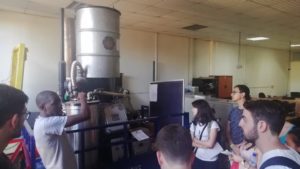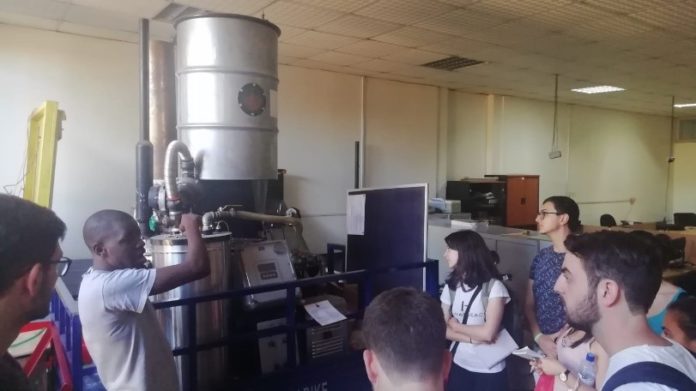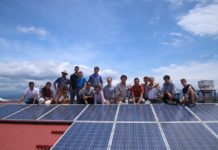by Federico Fava
On the day 5/1/19, Field Study Abroad #13 visited the Makerere University in Kampala (Uganda). Professor Francis Mujjuni welcomed us after our long bus trip in the “faculty of technology”, beginning to describe the general situation about energy in Uganda, focusing first in the past, then in the present and in the future.
After this exhaustive introduction, another student from the university introduced us to the C.R.E.E.C. (Centre of Research in Energy and Energy Consumption). Uganda in this moment is particularly aware about the renewable energies (for example government reduced the taxes so that the people can afford easily those new technologies), but the quality of the product that arrives in the hand of the citizen is often not satisfying. C.R.E.E.C.’s research is focused on testing those products to understand their parameters, as well as consulting and energy efficiency. C.R.E.E.C.’s lab is situated inside the Makerere University. Here a lots of sensitive equipments for measurements are stored and used for their research.
We saw the TRI-KA, a special controller that traces the “characteristic curve” for any PV panel using a particular solar simulator.
Than we saw a SPEKTRON integrating sphere, used for studying the performance of different lamps, using parameters like light spectrum, consumes, durability…
But one of the most interesting instrument observed this day is the miniGASIFIER. It is produced by “allpowerlabs” (lead productor of this type of machine all over the world), but the C.R.E.E.C. applied some modifications to the filter, only for experimental purposes. That is how it works: the tank is filled with biofuel that falls into the reactor, where the air’s ignition occurs. The ignition is controlled by “blowers” that regulate the amount of air for the combustion: the syngas is produced here, with a temperature from 600 to 900°C (surpassing the limit of 1200°C, silicates inside the biofuel will became solid, causing problems to the mechanical parts of the engine). After that, there are the filters that capture all the big particles, which can lower the LHV (lower heating value) or create complications in the engine that generates electricity. The exhaust gases are not immediately released into the atmosphere, but in order to lower the concentration of carbon monoxide inside it, they are used to dry the fuel in the tank and to preheat the fuel that enters into the reactor.
There was one detail that catched our interest particularly: the machine is totally installed in a truck behind a motorbike, so that it can be transported easily on the site where you want to supply your energy or the place where you want to show a demonstration about how it works.
Last thing we saw, was the different types of biofuel used here (from faecal sludge to the extern part of the nuts…): they can be used not only for the mini-gasifier, but also for the cookstoves disposed here. Right now, charcoal cookstoves in rural villages are the only way to cook something, but they bring us to much more important problems such as deforestation and pollution.
After the visit we went all together with the students to the university’s cantine to eat some delicious food, chatting about what we just saw.
Discovering and seeing with our eyes the reality of this continent, to observe how the new solutions to improve everyday life are studied, just gave us the consciousness of our role of engineering students, about how much is important our contribution to the research for the future of the planet, home for everyone.







